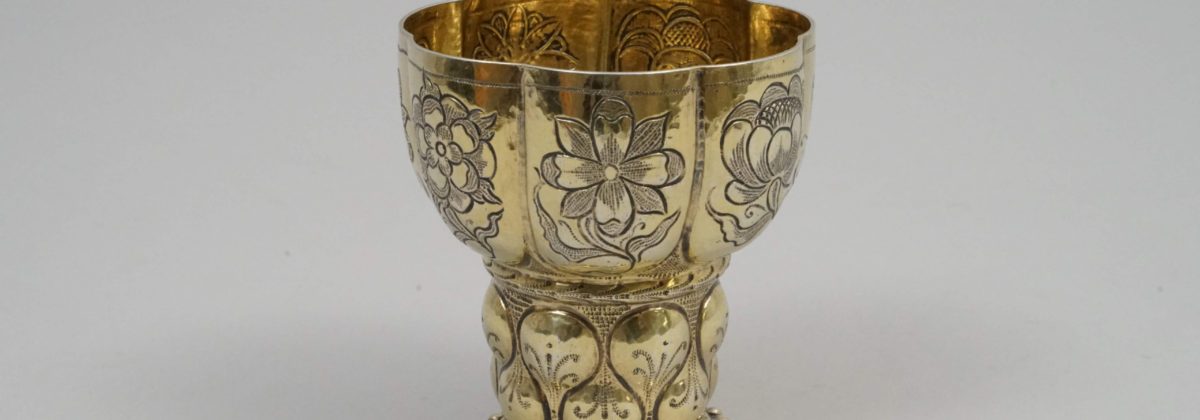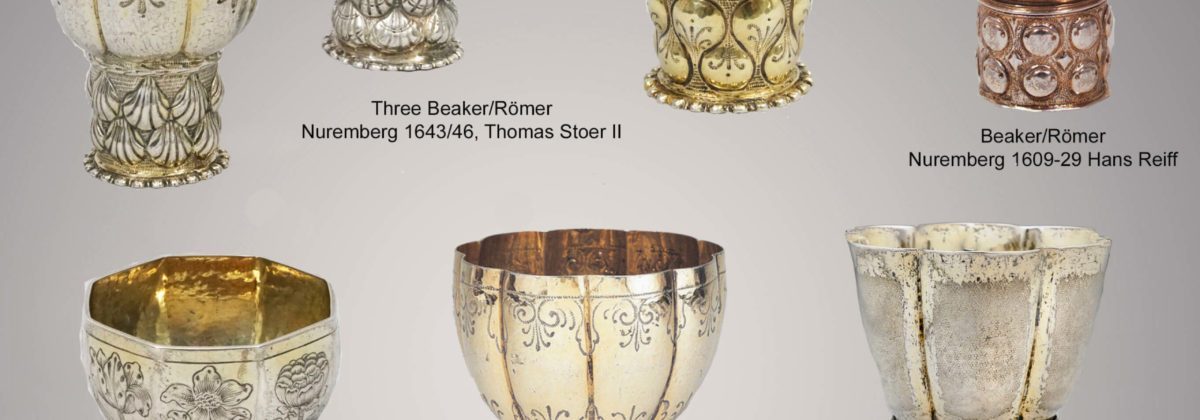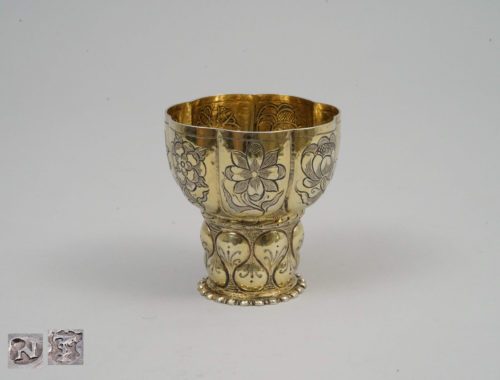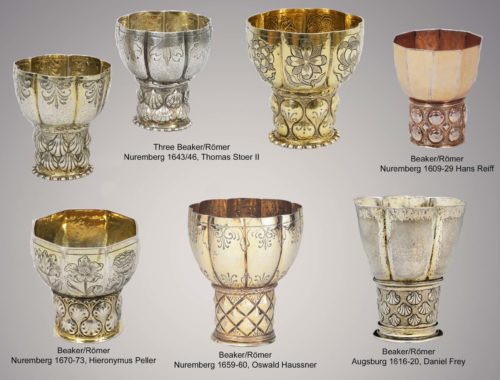Detailed Description
Important Silver-Gilt, Nuremberg wine cup/Römer
Due to its special shape, the present beaker belongs to the so-called “Römer”, drinking vessels for wine.
The cylindrical shaft rises on a gadronized base plate. This is decorated with two-row, nubes. The field between the nubes is softly punched like a snake skin. The seven-pass, slightly conical cuppa rises from the shaft, connected with a small bead. The outside wall of the cuppa is decorated with finely crafted flowers, some of which are again softly punched like a snake skin. The original gilding is first class inside and out.
History of the “Roemer”
The shape of the Roemer is derived from a medieval glass form. They are mentioned in the literature since the mid-fifteenth century. In the seventeenth century, the Roemer was given its typical shape: a trailed thread round and conical foot, a cylindrical prunted middle section (shaft), and a large rounded bowl. The drinking vessel was mainly used in Central and Northern Europe. In Dutch still life from the seventeenth century, Roemer made of glass are often seen. It is also known that in the seventeenth century large quantities of Roemer were made of glass, especially in Holland, Bohemia and England. They were made of metal only at the end of the seventeenth century and in the eighteenth century.
Helga Matzke currently presents six more Roemer from Augsburg and Nuremberg.
Nuremberg
In addition to Augsburg, the city of Nuremberg is one of the most important cities in Germany for gold- and silversmith’s works from the sixteenth to the eighteenth century. The specialty of the Nuremberg silver and goldsmiths were the so-called Buckelpokale (humpback-cups). Everyone had to make an Akeleipokal for master exam, which required a lot of technical skills, especially with the embossing.
The present Roemer is a wonderfully embossed drinking vessel that also presents that skill of the silversmith.
Maker
Thomas Stoer II. was the son of a silverworker, who originally came from Bohemia to Nuremberg, and was baptized on 8th of June 1601. He passed his master’s exam on March 25, 1629, but probably swore his oath nine years later. Since his first wedding in 1638 he did fulfill all the requirements for the acquisition of the master’s rights. Between 1651 and 1655 he was a juror. In 1661 he married a second time. The oeuvre of Thomas Stoer II is characterized by traditional drinking vessels, such as Roemer/ humpback-cups with contemporary decor. Vessels in vegetal forms, such as tulip were part of his work and other naturalistic creations of the seventeenth century, such as a pomegranate drinking vessel, were part of the stylistic directions in the silversmiths of Nuremberg. In the Landesmuseum Württemberg, Stuttgart, and the Victoria & Albert Museum, London, among others, works by Thomas Stoer II have also been preserved.
Literature
Karl Hernmarck: Die Kunst der europäischen Gold- und Silberschmiede von 1450-1830, München 1978.
Karin Tebbe: Nürnberger Goldschmiedekunst 1541 – 1868, Nürnberg 2007.





